Other
Archive for the ‘Technology Related Articles’ Category
Spam Emails, FISA New Privacy Regulations regarding contacting clients – Major Fines if not careful
Monday, March 14th, 2011Posted in Technology Related Articles | Comments Off on Spam Emails, FISA New Privacy Regulations regarding contacting clients – Major Fines if not careful
QR Codes launch in Real Estate Weekly
Thursday, February 3rd, 2011Other
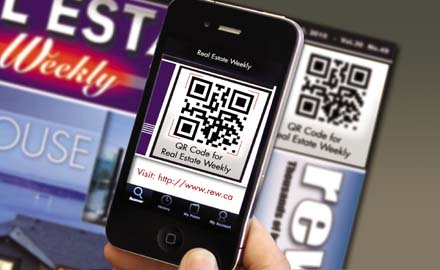
QR Codes: Have been used extensively in Japan, and are only recently being used with frequency in North America. So far, there seems no limit to their practical use. Photo: REW
You may have seen them popping up here and there, in advertisements or on products, or maybe at the end of magazine articles. They are QR, or quick response codes – two-dimensional bar codes that, when scanned, take users to specific websites. All you need to make the code work is a smart phone with a camera and QR code reading application, which is available for free download. The codes have been used extensively in Japan, and are only recently being used with frequency in North America. So far, there seems no limit to their practical use. “This is new technology,” says Tarrah Little, assistant marketing manager for New York-based Scanlife, Inc. “I’ve been here for 14 or 15 months and since January our sales and the interest in general has multiplied by 10. People are really starting to take notice,” Little says. The reason for the success surrounds the limitlessness of the technology. For example, when asked for whom this technology is suited, Little replies: “Everybody, there really are so many different applications.” At Real Estate Weekly we immediately recognized the tremendous opportunity to make QR codes a reality for our readers and clients. The ability to directly connect prospective buyers with the Realtor and Developer’s websites is simply powerful. QR Codes offer a new way of interacting with clients – which is always a good thing. It’s a new way for people to instantly gain access to websites. Readers might be sitting in their doctor’s office, at Starbucks or in their Laz-y-boy at home and when they see an ad with a QR code, they can instantly link to the Realtor or Developer’s website. Beginning this week, Real Estate Weekly has integrated the QR Codes with many of our advertisers. Look through our pages and try out a QR Code on an interesting advertisement and experience for yourself this leading edge technology. To download a QR Code reading application for your Smart Phone, visit the App store on your device and search for QR Code. Little says there are many free apps to choose from and recommends the Scanlife app which runs very well on her iPhone.
Copyright Real Estate Weekly
Posted in Technology Related Articles | 1 Comment »
GPS Device can track you even with no cell service
Monday, January 3rd, 2011Talia Veli
Other
Posted in Technology Related Articles | Comments Off on GPS Device can track you even with no cell service
Cracking the code of a marketing craze
Wednesday, September 1st, 2010Vancouver firm uses new technology to turn smartphone users into environmental activists
Gillian Shaw
Sun
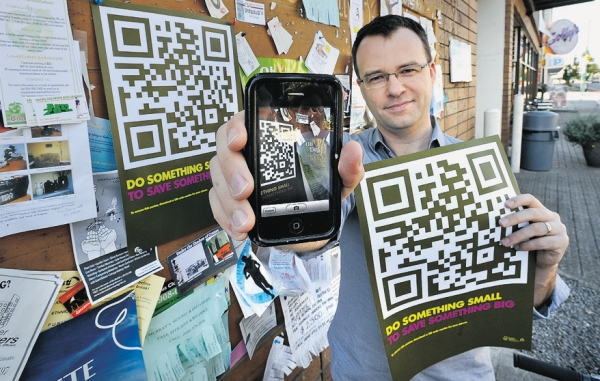
Darren Barefoot, a partner at Capulet Communications, is behind the Big Wild campaign that uses posters bearing a strange code. People who scan the so-called QR code using a smartphone are directed to an online petition to save the Flathead River Valley. Photograph by: Bill Keay, Vancouver Sun, Vancouver Sun
There are mysterious symbols popping up on Vancouver lamp posts. It’s a secret code that only initiates of new technology can unravel. And unravelling they are — pointing at the symbols with their smartphones, which read the two-dimensional code and deliver a message.
QR stands for quick response. It’s a technology that’s only starting to reach Main Street, North America. Perhaps the most visible example is a giant billboard in New York City that displayed a cryptic code viewers had to scan with their smartphones — to reveal a Calvin Klein ad showing lithe, underwear-clad models.
In Canada, the Big Wild has become the first environmental organization to tap into the QR craze. It is hoping to build an online and offline buzz and prompt people to sign a mobile-friendly petition aimed at saving British Columbia’s Flathead River Valley.
While QR codes may only be understood by the more technologically inclined, their use is growing and they can be found anywhere from flyers to posters to restaurant bills.
“It’s huge in Japan,” said Darren Barefoot, a partner at Vancouver’s Capulet Communications, which created the QR campaign for the Big Wild, a conservation movement founded by Mountain Equipment Co-op and the Canadian Parks and Wilderness Society. “My favourite example in Japan are the QR codes on burger wrappers,
which you can scan to get nutritional information.”
The codes can draw a link for users between their online and offline experience.
“We’re always looking for new angles, new strategies and new approaches to get people’s attention,” Barefoot said of the decision to poster Vancouver with the Big Wild’s cryptic message. The campaign is also being rolled out in seven other Canadian cities.
“We wanted to try out a campaign with these QR codes and add an element of mystery,” said Barefoot. “They are unbranded posters.
“The idea was that we would entice people; the people who might scan the codes are technologically minded so they would know about the code and know what to do with it.”
It’s an inexpensive way to deliver a message.
A QR code could link to a phone number, a web address or a short text message. Among QR services are ones that let you put a code on your contact information, so people could scan the code with their smartphone
and automatically add you to their contacts.
The codes are used in Japan for commerce, allowing such transactions as scanning at a vending machine and having the charge go straight to your phone bill. And it’s now possible to pay some bills here simply by using your smartphone as a scanner.
In Vancouver, Mobio Identity Systems is using the technology to deliver everything from snacks to football fans to payments for pizzas.
“If you download a scanner to your phone and scan a bar code it is going to take you to a website,” said Mobio founder and chief executive Clovis Najm. “Ours go on to managing the interaction for the user.
“For example, Habitat for Humanity uses our bar codes on T-shirts that people working on their restoration sites wear. When you scan the bar code you can donate money immediately.”
Mobio also counts NFL and NBA teams among its clients. Fans of the Jacksonville Jaguars will be able to order food to their seats, simply by scanning in the code on their program. Scanning the code will produce a menu, let the buyers choose an order, then the items will be delivered to their seats.
“The QR bar code is great for basically signifying to somebody they are going to go to the Internet on one level, but when people see the Mobio sign, they know there is some sort of interaction or transaction that will occur,” said Najm.
Several Vancouver stores, restaurants and businesses use Mobio, either as part of a promotion or for such transactions as paying for a meal.
A list of locations that use the Mobio application can be found at getmobioid. com/locations. The Mobio iPhone app is at getmobioid. com.
© Copyright (c) The Vancouver Sun
Posted in Technology Related Articles | Comments Off on Cracking the code of a marketing craze
Researcher has a wake-up call about wireless
Tuesday, August 31st, 2010B.C. author promotes consumer guide to reducing electromagnetic radiation
Pamela Fayerman
Sun

Kerry Crofton owns a cellphone, but uses it primarily for emergencies. Photograph by: Steve Bosch, Vancouver Sun, Vancouver Sun
Kerry Crofton travels with a land line phone, purposely stays in hotels that don’t offer wireless Internet in rooms and when she gives her talk tonight on the topic of wireless radiation, it will be in a downtown Vancouver venue selected because it purportedly has no such radiation.
The Victoria-based health researcher is speaking at the wireless network-free St. Andrew’s-Wesley Church, where she’s promoting her new book, Wireless Radiation Rescue, said to be the first consumer guide to reducing levels of electromagnetic radiation in homes, offices and schools.
Crofton does practise what she preaches. Hence, arranging a phone interview to take place while she was en route to Vancouver was a bit of a challenge since she owns a cellphone but prefers not to use it except in emergencies. The interview took place during her sailing; she called from a pay phone on the ship.
Some would argue Crofton’s beliefs are extreme. A B.C. study a few years ago concluded there may be one extra case of childhood leukemia every two years because of power lines.
Health Canada, meanwhile, has issued statements denying the health threat from wireless technology and cellphones.
“Based on scientific evidence, Health Canada has determined that exposure to low-level radio-frequency energy, such as that from Wi-Fi systems, is not dangerous to the public,” said a statement from the federal agency.
On another occasion, Health Canada said it “currently sees no scientific reason to consider the use of cellphones as unsafe … and there is no convincing evidence of increased risk of disease from exposure to radio frequency electromagnetic fields from cellphones.”
But Crofton, who has a doctoral degree in health psychology, has spent the last five years collecting research on radiation from power lines, cellphones, cordless phones, wireless Internet, computers, baby monitors and microwaves.
And she’s convinced that government standards meant to be protective are too lenient and while cellphone industry-sponsored research may show no impacts, other studies do show biological effects causing symptoms such as headaches, heart effects, decreased fertility and neurological disorders.
Crofton has three decades of experience devising wellness and heart health programs for air traffic controllers, pilots, nurses, teachers and others. Until she started doing her research, Crofton was like most people: she wanted the latest, fastest technology.
“It’s not that I am against technology now. The Internet is extraordinary. Computers are essential. I just make sure that I have mine set up as a fully wired system, without the wireless mouse, without the wireless monitor and without the wireless router.”
She acknowledges that not all people will experience symptoms of such radiation.
“Absolutely, there are some people who are more electro-sensitive than others.,” she said.
Recently, a British scientist waded into the issue of wireless networks in Canadian schools, warning generations could face genetic disorders because of prolonged exposure to low-level microwaves.
“Children are not small adults, they are underdeveloped adults, so there are different symptoms,” said Barrie Trower, who specialized in microwave “stealth” warfare during the Cold War.
Crofton will be joined tonight by American cardiologist Dr. Stephen Sinatra.
© Copyright (c) The Vancouver Sun
Posted in Technology Related Articles | Comments Off on Researcher has a wake-up call about wireless
CRTC delivers blow to Bell
Tuesday, August 31st, 2010Major Internet providers must now lease network space to independents
Jamie Sturgeon
Province
The country’s major Internet providers, such as BCE Inc.’s Bell Canada and Telus Corp., will be forced to lease network space to smaller competitors at matching speeds to ensure competition for broadband services, the telecommunications regulator said in a key ruling Monday.
The decision, delivered after hearings last spring, is a critical, if only partial, victory for independent resellers like TekSavvy Solutions Inc. and Telnet Communications, which will now be able to keep pace with incumbent offerings.
Yet for Telus and Bell, it is a big blow in their fight to gain television share and slow phone line losses against rival cable companies Shaw Communications Inc. and Rogers Communications Inc.
Limited bandwidth capacity the pair would rather use for new Internet TV products must now instead go toward wholesale services under regulated prices and fixed returns.
Konrad von Fickenstein, the chairman of the Canadian Radiotelevision and Telecommunications Commission, acknowledged that big providers are investing in network infrastructure, but regulated access was still required to foster “more competition and (to better serve consumers.)”
Third-party resellers’ business model depends on set prices for wholesale network access, which is then resold to customers.
The group, which consists of several dozen companies across the country led by the bigger firms like TekSavvy, has been selling slower broadband services over the past several years as incumbents have steadily increased their own speeds, threatening to drive out independent wholesalers.
Short of a ruling mandating matching, “we [would have to] close our doors,” said Tom Copeland, head of the Canadian Association of Internet Providers, which represents about 50 small ISPs. “If we can’t deliver services to our clients on a competitive basis, what else is there to do? We can buy retail services from these companies and repackage them, but at that point, we’re already under margin pressure.”
Resale data speeds will now be dialed up to comparable incumbent rates of about 15 to 16 megabits per second, from between four to five Mbps in many cases, said Andrew Day, chief operating from Primus Canada.
To compensate for the increase, the commission said it will allow for incumbent network owners to raise tariff prices by 10 per cent.
It is a policy tweak that few are happy with — it cuts into already thin reseller margins, Day said, but fails to make up for capital losses phone firms like Bell and Telus are sure to see, according to Telus’s chief of regulatory affairs, Michael Hennessy.
Telus, like Bell, is locked into a growing “facilities-based” battle for household Internet, television and home-phone accounts. The speed matching required from the regulator means the phone firms will have to give greater bandwidth to resale services, even drop services like TV where capacity is constrained, he said.
“When we give our loop to a reseller, we’re foregoing the opportunity to sell TV,” Hennessy said. “So at the margins, particularly in rural markets, this decision has the potential to slow the rollout of investment.”
© Copyright (c) The Province
Posted in Technology Related Articles | Comments Off on CRTC delivers blow to Bell
Recession hits smartphone makers in the chips
Sunday, August 22nd, 2010Peter Svensson, Associated Press
USA Today
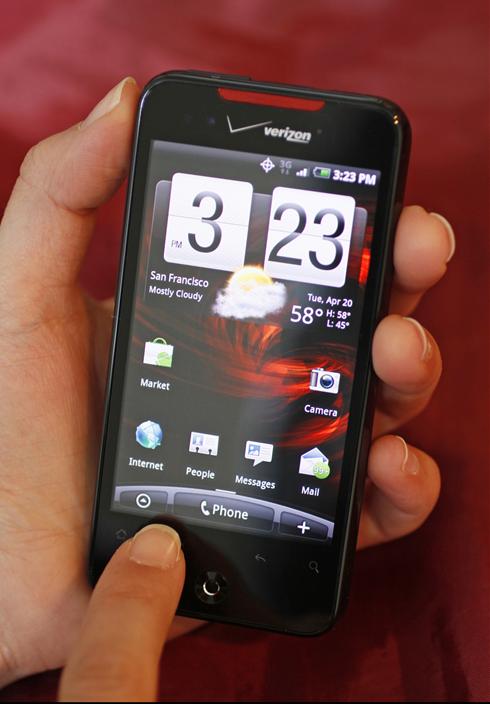
The Droid Incredible cellphone by HTC is displayed in San Francisco. One of the few product categories that kept selling strongly through the recession was smartphones. Eric Risberg, AP
NEW YORK — The seemingly recession-proof smartphone is suffering from a side effect of the rough economy: Manufacturers simply can’t build enough of the gadgets because chip-makers that rolled back production last year are now scrambling to play catch-up.
The chip shortage means Apple‘s rivals are having trouble making enough phones to compete with the iPhone, a problem expected to persist through the holidays. It’s also affecting wireless carriers, some of which are seeing delays in improving their networks, and it could even raise computer prices.
There isn’t an across-the-board shortage of chips, but rather problems with certain components here and there. If just one of the 20 to 30 critical chips that go into a smartphone is unavailable, the whole production line screeches to a halt.
Sprint Nextel Corp., for instance, couldn’t satisfy demand for HTC Corp.’s EVO 4G, the first phone to use a faster “4G” network, in parts of the country. Motorola Inc. said shortages of a wide range of chips, from memory to camera sensors to touch-screen controllers, are contributing to problems supplying enough of the new Droid X phones to Verizon Wireless. The carrier’s online store reports a two-week wait for shipping orders.
The chips that go into smartphones compete for production capacity with other chips at the gigantic factories run by contract manufacturers such as Taiwan Semiconductor Manufacturing Co. and United Microelectronics Corp. Makers of a vast array of electronics, from TVs to data center switches, also depend on the factories.
The chip-making industry had a tough start to 2009. February sales were only $14.2 billion, down 30% from the year before, according to the Semiconductor Industry Association.
Although sales sprang back later in the year, manufacturers were spooked and reined in investment in chip factories. Capital spending plunged 41% to $25.9 billion in 2009, after dropping 31% the year before, according to research firm Gartner Inc. Total chip production capacity shrank.
Now the factories are having trouble scaling up production fast enough. The chip factories, or “foundries,” are running at 96% capacity, up from 56% at the depth of the recession, according to the SIA.
“The semiconductor guys are really continuing to operate on all cylinders,” said Linley Gwennap, president of research firm The Linley Group.
Gartner predicts worldwide investment in the chip industry zooming 84% this year to $47.5 billion. That forecast is up from March, when it looked for a 56% increase.
While investment is recovering, it takes months to set up new production lines and upgrade existing ones. That’s why executives see shortages lasting until next year. Gwennap also sees caution in the industry because the global economic recovery is starting to look quite tentative.
“Even where companies are facing shortages, they’re saying ‘Nah, I’m not sure I want to invest right now, because demand could turn down any minute.’ That makes for a very difficult environment,” he said. “In normal times, companies would be hiring, investing in more equipment and factories and trying to increase supply, but these aren’t normal times.”
Though consumers may have to wait for new phones, they’re unlikely to notice price increases. Phone prices are heavily subsidized by carriers, and competition in the industry means it’s likely someone in the supply chain will absorb higher prices for the chips.
However, research firm iSuppli warns that prices for PCs could rise this year because of short supplies of memory chips. The prices for these commodity chips are highly volatile. Smaller memory-chip manufacturers need to replace factory equipment, and tool suppliers are struggling to keep up, iSuppli said.
Makers of computer and phone networking equipment were the first to report problems this spring. They continue to face constraints, which means trouble for U.S. wireless carriers that are struggling to increase network capacity to cope with data traffic from the iPhone and other smartphones.
Alcatel-Lucent and LM Ericsson AB, the two largest makers of equipment for U.S. phone companies, have both reported problems making deliveries. They’re both suppliers to AT&T Inc., which has complained that it can’t beef up its wireless data network as fast as it would like, as it’s trying to deal with traffic from the iPhone.
Computer networking giant Cisco Systems Inc. is also feeling the pinch and expects problems to continue through the year.
“We continue to see challenges in procurement of components this quarter,” Cisco CEO John Chambers said recently. “Supplier lead times now appear to have stabilized, but are still longer than we would like.”
Apple is an exception. Although the company can’t keep the iPad and iPhone 4 in stock, it blames that on demand outstripping assembly line capacity, not on problems procuring the right chips.
That may be partly “dumb luck” on Apple’s part, Gwennap said, but it could also be a case of it being “good to be the king.”
“As a chip supplier, you’re going to service your best customers first,” he said. “If my choice is to try to make Apple happy or some smaller customer of mine, I might take all of my supply and give it to Apple.”
Copyright 2010 The Associated Press. All rights reserved
Posted in Technology Related Articles | Comments Off on Recession hits smartphone makers in the chips
Criminals want hacker-for-hire online black market
Sunday, August 22nd, 2010Crime organizations seek to contract out illegal activities that require specialized technical expertise
Giuseppe Valiante
Province

Organized crime is increasingly using social networking services such as Facebook and Twitter to unlock access to potential victims. Photograph by: Rachel Niebergal File Graphic, Postmedia News, Postmedia News
Criminal organizations are calling on a type of hacker-for-hire online black market, where they can buy the tools and services they need to break into brokerage accounts, says a new report by Canada’s crime watchdog.
It’s one example of a new frontier of online-based fraud that exists for organized crime in this country, says the 2010 25th annual Report on Organized Crime by Criminal Intelligence Service Canada.
The report, released Friday, focuses on securities fraud, and states the size and complexity of schemes help conceal criminal activity, generate ample profits and facilitate tax evasion.
It said social-networking websites are allowing criminals to efficiently and anonymously issue fake news releases and promotional material to potential victims.
Aside from the use of Facebook and Twitter, criminal organizations are taking advantage of the hacker-for-hire black market, it said.
The report offered few details. However, it said because of the availability of these services, fraudsters don’t need to acquire the necessary technical expertise to hijack computer accounts on their own.
“Criminal groups are constantly adapting to exploit new opportunities for illicit profit and take advantage of communication and transportation technologies that increase the scope and range of their unlawful activities,” said RCMP Commissioner William Elliott at a news conference in Edmonton on Friday. “Too many Canadians are subjected to the damaging effects of criminal activity.”
The report is released each year to provide the public with what the government believes is an overview of criminal markets in Canada.
The report said there is not a single dominant organized crime group across Canada but a number of criminal organizations that operate out of major regions such as the Lower Mainland, the Greater Toronto Area and the Greater Montreal Area. The crime in these areas, police say, influences crime in other regions in the country.
© Copyright (c) The Province
Posted in Technology Related Articles | Comments Off on Criminals want hacker-for-hire online black market
BlackBerry improves browsing
Saturday, August 21st, 2010Torch 9800 also features a touch screen
Gillian Shaw
Sun
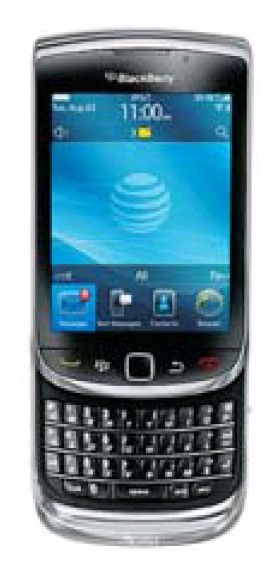
BlackBerry Torch 9800 Research in Motion

Marvel Comics Headphones Coloud
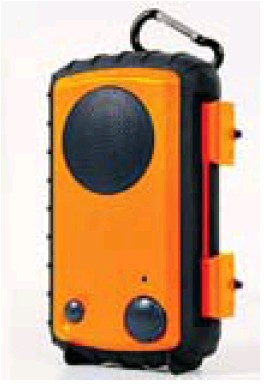
Eco Extreme, Grace Digital Audio
BlackBerry Torch 9800 Research in Motion
Canadian pricing to be announced
It has been a banner summer for smartphones, with the arrival of the iPhone 4 in Canada followed shortly by Research in Motion’s highly anticipated announcement of its
new BlackBerry Torch 9800. It has a QWERTY slide-out keyboard with a 3.2-inch (8.1 cm) touch screen, the
new BlackBerry 6 operating system and browser promising improved Internet browsing, which has been my pet peeve on my (admittedly outdated) BlackBerry. It has a five-megapixel camera and built-in GPS and Wi-Fi with four gigabytes of built-in memory with a microSD slot that lets you add up to 32 GB with a memory card. Canadian carriers Telus and Rogers have announced they will carry the new BlackBerry but no details on pricing yet. www.blackberry.com
Marvel Comics Headphones Coloud, $40 US
Sport your favourite Marvel Comics superhero on your headphones. From Wolverine, the Hulk and Iron Man to the X-Men, these Coloud headphones make a colourful statement. The characters are printed in 3D rubber patches, giving the headphones a distinctive look and feel. The 3.5-mm jack is compatible with your iPod and other audio players. www.coloud.com.
Eco Extreme, Grace Digital Audio, $50 US
Every summer I hear the seasonal horror story about the cellphone that dropped out of a pocket when someone was leaning off a boat or dock. If that describes you, consider the Eco Extreme speaker case from Grace Digital Audio, which is waterproof as well as high-impact shock-resistant. Built to hold your iPhone, iPod, cellphone or MP3 player, keys, credit cards and other items that don’t always survive a trip to the beach, the Eco Extreme has a 3.5-mm audio jack that will work with mobile phones and MP3 players. It also has a detachable clip to hook onto your backpack for hiking. www.GraceDigitalAudio.com
1090 HardBack Case, Pelican Products, $130
While you’re safeguarding your electronics, take a look at the latest offerings from Pelican Products, the company known for its heavy-duty protective cases. The 1090 HardBack, for up to 15-inch laptops, is crush-resistant and watertight. If you want to know the difference between watertight and waterproof, heed Pelican’s Keith Swenson: “Most Pelican cases are designed to be watertight but not waterproof — meaning that you can’t take them to be bottom of the ocean, but a short dunk isn’t a problem.” Shock-absorbing foam cushions your laptop and a nylon shoulder strap makes it easy to juggle with other luggage. Pelican has a lifetime guarantee, promising “You break it, we replace it … forever.” It doesn’t cover theft, though, so even though your Pelican case could withstand getting tossed around the luggage belt, most road warriors would recommend you keep your laptop with you for the plane. www.pelican.ca
© Copyright (c) The Vancouver Sun
Posted in Technology Related Articles | Comments Off on BlackBerry improves browsing
New free anti virus software adds extra layers of protection
Wednesday, August 18th, 2010New tools fortify your cyberdefenses
Byron Acohido
USA Today
It’s riskier than ever to get on the Internet. Cybercriminals use tricks to get you to click on infectious Web links in e-mail, social-network postings and even search engine results.
Simply navigating to a well-known, legitimate website can result in what’s known as a “drive-by download,” the stealthy installing of a computer infection onto your PC’s hard drive.
The endgame for cybercriminals: take full control of your PC and use it to help carry out online thefts and scams. It’s essential to keep your anti-virus protection current and to regularly install all Microsoft, Adobe, Apple and Java security patches.
But that’s not nearly enough to stop many of the latest infections. The good news: There are new software tools that can help you clean up and repel the latest cyberattacks. Many of them are free. Most require patience to learn how to use. Be prepared to sacrifice convenience for added security, as using these tools will add steps to your ongoing use of the Internet. Here are four of the newest tools:
SlimWare Utilities
What it does: SlimComputer and SlimCleaner work together to boost overall computer health and performance. “We can help identify malicious programs that are hooked into your operating system that you may have picked up over time,” says Chris Cope, SlimWare founder and CEO.
How it works: SlimWare keeps track of your applications. It makes special note of apps configured to launch on start-up and run in the background, as well as programs set to run in your Web browser. It then guides you through deciding whether to disable each program.
What you gain: Disabling browser toolbars, instant-messaging programs and unnecessary software updaters (apps that periodically prompt you to update or upgrade games, media players and the like) can dramatically boost PC performance, says Cope. SlimWare also helps identify and eradicate apps that are clearly criminal, including banking Trojans used to steal from your online banking account.
Availability: Free consumer beta test version now available at www.slimwareutilities.com.
Qualys BrowserCheck
What it does: BrowserCheck monitors your Web browser, as well as popular browser plug-ins and add-ons, to make sure you’re running versions containing the latest security patches. “The cybercriminals know that many consumers are not aware that using out-of-date browser plug-ins can make them vulnerable to attacks,” says Wolfgang Kandek, chief technical officer at Qualys.
How it works: BrowserCheck verifies and, if necessary, guides you to update security patches for Windows service packs, Internet Explorer, Firefox, Chrome, Adobe Flash Player, Adobe Reader, Adobe Shockwave Player, Apple QuickTime, BEA JRockit, Microsoft Silverlight, Microsoft Windows Media Player, RealPlayer, Sun Java and Windows Presentation Foundation plug-in for Mozilla browsers.
What you gain: Hackers use automated tools to sequentially check each of these browser components for unpatched security holes. So if you’re behind on patching any one of them, they will find the flaw. Running BrowserCheck once a week and installing the recommended updates will help keep your browser locked down.
Availability: Free tool available at browsercheck.qualys.com.
Cloudmark DesktopOne
What it does: DesktopOne blocks nuisance and malicious e-mail and can serve as an added layer of protection, even if you already use a spam filter. “It will protect you from anything e-mail-borne that’s malicious or unwanted,” says Kris Politopoulos, director of customer support at Cloudmark.
How it works: Once installed, DesktopOne filters e-mail continuously, even if your e-mail program is not open, or if you happen to be accessing e-mail via a browser or from a remote computer. A basic free version allows you to protect a single e-mail account. A pro version enables you to manage protection for several accounts and includes more features.
What you gain: It will quarantine messages carrying spam, phishing scams, tainted Web links and viral attachments. The pro version lets you manually scan message folders, designate trusted contacts and automatically delete old spam messages.
Availability: Free and pro version, priced at $19.95 for a one-year subscription, available at www.cloudmarkdesktop.com.
Invincea Browser Protection
What it does: Browser Protection launches a virtual browser that runs completely detached from the Windows operating system. It watches for suspicious programs being launched in the browser. Upon detecting an attack, it takes steps to shut down, then relaunch another virtual browser in a known clean state.
How it works: If you click on a Web link pointing to an infected site, the virtual browser will detect the infection as the attack code tries to take control. It will prompt you to terminate the browser session, or it will automatically restore in a short period of time. This cuts off the installation of malicious code, protecting your PC.
What you gain: Tech systems integration company CACI has been testing this for about a year with promising results, says Zal Azmi, senior vice president of cybersecurity solutions. “By itself this technology is incredible,” says Azmi. “Right now it’s at an infancy stage. But the virtual browser could be a big asset to the novice.”
Availability: Invincea founder Anup Ghosh anticipates having a consumer version ready by early 2011. The company is currently deploying Browser Protection to corporations and government agencies, including the Department of De-fense.
Copyright 2010 USA TODAY
Posted in Technology Related Articles | Comments Off on New free anti virus software adds extra layers of protection

